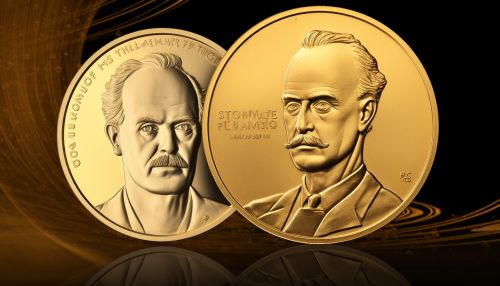The attainment of the Dirac Medal by a biophysicist is a remarkable nexus of two seemingly disparate fields: life sciences and theoretical physics. This award, which commemorates the legacy of Paul Dirac, acknowledges profound contributions that advance our understanding of physics, and when awarded to a biophysicist, prompts a reconsideration of the intricate interdependencies that exist between biological phenomena and physical principles. Could it be that life itself serves as the ultimate experiment in theoretical physics?
Biophysics, by its very nature, transcends traditional disciplinary boundaries, weaving together the nuanced intricacies of biology with the rigorous frameworks of physics. This interdisciplinary matrix thrives on the premise that biological systems can be modeled and understood through quantitative methods typically reserved for physical systems. In this light, the biophysicist’s receipt of the Dirac Medal is a clarion call for the academic community: the convergence of life and physics may hold answers to questions hitherto unarticulated.
As we delve deeper into the implications of this award, it is essential to recognize the breadth of research that a biophysicist may engage in, particularly areas such as molecular dynamics, statistical mechanics, and the application of quantum mechanics to biological systems. The quest for understanding protein folding, for instance, exemplifies the profound interplay of these disciplines. Protein folding is not merely a biological process; it is a conundrum that can be elucidated through the principles of thermodynamics and kinetics—areas steeped in physics.
The biophysicist’s innovative approach to these challenges may draw from a repertoire of theoretical frameworks, allowing for the modeling of complex biological interactions at the molecular level. The recent advances in computational biophysics have catalyzed an unprecedented exploration of how biological envelopes operate under various physical constraints. As biophysics continues to evolve, it poses significant questions regarding the universality of physical laws across different scales—do biological systems obey the same laws that govern celestial bodies? This curious inquiry invites discussion and further investigation.
Consider the enigmatic phenomenon of quantum biology, which examines the role that quantum mechanics may play in processes such as photosynthesis and avian navigation. The idea that biological efficiency might stem from quantum coherence is a radical proposition. It challenges our classical perception of life and suggests that, at its core, life may operate on principles that we have yet to fully comprehend. Could it be that the same quantum phenomena that dictate the behavior of particles on a subatomic level are also integral to the workings of life forms? This question is not just playful; it serves as a crucial challenge that invites both biologists and physicists into a collaborative discourse.
The pursuit of such knowledge inherently assumes a commitment to interdisciplinary dialogue. The Dirac Medal’s recognition of a biophysicist underscores a pivotal shift in research paradigms. Academia is increasingly acknowledging the limitations of siloed approaches. The biophysicist stands at the confluence of these fields, armed with methodologies that can bridge gaps in understanding and foster collaborative efforts. As researchers pursue avenues that harmony life sciences with the rigorous foundations of physics, a plethora of applications emerge.
From genetic engineering to the design of novel drug delivery systems, the collaboration between biophysicists and theoretical physicists is revolutionizing medical research and biotechnological innovation. Consequently, the Dirac Medal serves not merely as an accolade but as a beacon urging further exploration into the potential symbiosis between biology and physics. Can one envision a future where these domains are so intertwined that the resultant innovations could yield ethical dilemmas regarding the essence of life itself?
Moreover, the implications of this award extend beyond scholarly accomplishment; they ignite discussions on the future trajectory of scientific inquiry. The biophysicist’s work could inspire a new generation of researchers to ask fundamental questions about life’s underpinnings through the lens of physical theory. What other mysteries remain at the intersection of biology and physics yet to be deciphered? The pursuit of answers to such questions will likely delineate the contours of the scientific landscape in the coming decades.
It follows that the recognition of a biophysicist with the Dirac Medal may catalyze increased funding and resources directed toward interdisciplinary projects, fostering a fertile ground for groundbreaking discoveries. There is a growing imperative to champion research that embraces this blending of disciplines, as it represents the frontier of our understanding of both life and the universe. As academic institutions rethink their approaches to curricula and funding, can they adequately equip upcoming researchers with the tools necessary to traverse these complex landscapes?
In conclusion, the awarding of the Dirac Medal to a biophysicist signifies more than a commendation of individual achievement; it represents a pivotal moment in the evolution of scientific thought. This recognition catalyzes urgent questions on how we understand the nature of life through an ever-deepening relationship with theoretical physics. The challenge lies not just in answering these questions, but in fostering an environment that encourages exploration across disciplines. Only through such collaborative efforts can we hope to unravel the profound mysteries of life, much as Dirac sought to elucidate the complexities of the quantum realm. The potential for innovation and understanding at this intersection remains vast and exhilarating.










